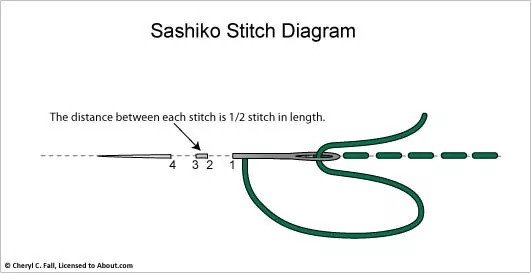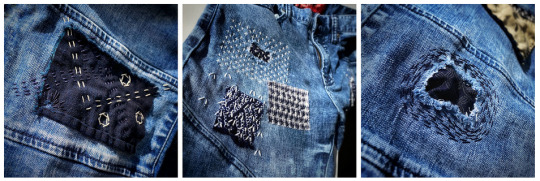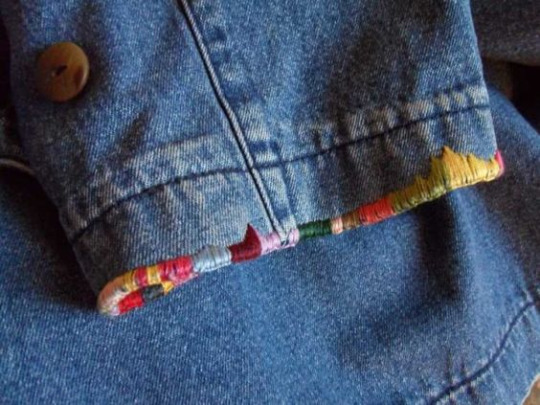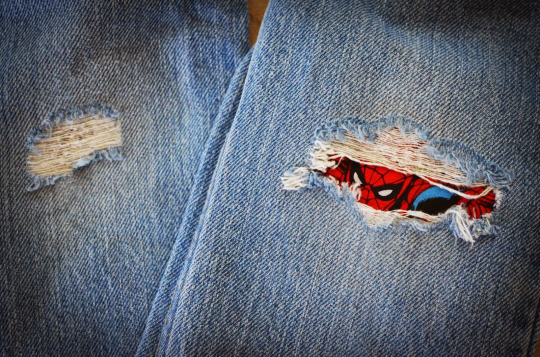#sashico
Text


Hold my strawberry. I have a mountain to climb
591 notes
·
View notes
Link
Check out this listing I just added to my Poshmark closet: Lululemon Power Up Tank II - Sashico Star Blue.
0 notes
Link
Check out this listing I just added to my Poshmark closet: Lululemon Wunder Under Crop II Full-On Luon Sashico Star Inkwell Rugged Blue.
0 notes
Link
Check out this listing I just added to my Poshmark closet: Lululemon Miss Misty Pullover Hooded Jacket.
0 notes
Photo

After the Tohoku earthquake and Tsunami, some people in Otsuchi learned about Sashiko. After 10 years, they are still stitching. It is our sincere honor to support the Otsuchi Sashiko Project. Sashiko Noragi with Traditional Designs Made by @ootsuchisashikoproject with @Sashi.Co & Keiko Futatsuya Estimate production lead time: 12 months. MSRP: $3,000.00 and up. Completely one of a kind Jacket. Power of hand-stitching. Pray for Japan, with you. 大槌刺し子プロジェクトの皆様の、手仕事の刺し子を繋ぎ合わせて作られた野良着です。10年目の今日を迎えて、これからも引き続き手仕事を楽しむ皆様を応援して行けたらと思うのです。 ☆ #Sashiko #JapaneseSashiko #RunningStitches #OtsuchiSashiko #SashikoJacket #SashikoStitching #SashiCo #KeikoFutatuya #刺し子 #日本の刺し子 https://www.instagram.com/p/CMR8ZgRnMdD/?igshid=1dz6rn0mhj006
#sashiko#japanesesashiko#runningstitches#otsuchisashiko#sashikojacket#sashikostitching#sashico#keikofutatuya#刺し子#日本の刺し子
4 notes
·
View notes
Photo

20200728 刺し子でお弁当包みを作りました。 楽しくて手が止まらず。 色違い柄違いでまた作りたいです。 明恵さん作のアイピローは 中にあずきが入っていてレンジで少し温めてから 目や肩、首などに乗せたり エアコンで冷えたお腹の上に乗せたりすると 癒されると大活躍のようですよ。 #hibi #news #sashico #刺し子 #小豆 #handmade #アイピロー #eyepillow https://www.instagram.com/p/CDNOatpFYeK/?igshid=1nfk9cnmd0fyo
0 notes
Text
Visible Mending
Introduction:
Visible mending is a decorative way to fix up an item. Instead of trying to make your mend as invisible as possible, the idea is to make it part of the garment's design.
Visual mending is not a single technique: it's more of a mindset. If you've got an item you love, it deserves to be mended, and if you're going to put that love into stitches, why not show them off?
That being said, there are some specific techniques that are popular with visible menders. Let's take a look!
Sashiko:
Sashiko is a type of traditional Japanese embroidery that is used to both decorate and reinforce fabric. In visible mending, sashiko is often used to cover up holes with patches or to reinforce thinning fabric. This technique uses a variation on the running stitch.

(Image source) [ID: sashiko stitch diagram: the distance between each stitch is 1/2 stitch in length.]
Some resources on sashiko:
SashiCo on YouTube: sashiko livestreams and information on the cultural aspect of sashiko.
Written tutorial by Upcycle Stitches.
Free sashiko templates by TheSpruceCrafts.
Fixing jeans with sashiko by Soluna Collective.

(Image source) [ID: three examples of sashiko embroidery on jeans fabric.]

(Image source) [ID: sashiko embroidery with white thread on blue jeans fabric.]
Embroidery:
Regular embroidery is also a popular technique to accentuate your mends. Check out my embroidery 101 post to learn how to get started. You can embroider patches, or use embroidery to hide or accentuate any stitches you've made to fix holes. Embroidery's also a great way to cover up stains.

(Image source) [ID: colourful embroidery floss covers a worn sleeve edge of a jeans jacket]

(Image source) [ID: colourful flower embroidery surrounds a hole in a pair of dark gray jeans. Fabric with a red and black flower print peaks out of the hole.]
Patches:
There are many ways to add patches to a garment. My tutorial on patches is a good place to start if you want to make custom-shaped patches to sew on top of your fabric. You can also sew your patch on the inside of your garment and have it peek out from beneath the hole you're trying to fix. Fun ideas for this are lace or superheroes.

(Image source) [ID: Spiderman peaking out of a rip in a pair of blue jeans.]

(Source) [ID: a red flannel heart-shaped elbow patch on a gray knitted sweater.]
Darning:
Darning is a technique used to repair holes in fabric by using running stitches to weave extra fabric over the hole as to fill it up again. While traditionally darning is done in an invisible way by using the same colour of thread as your fabric, you can also use contrasting colours to accentuate your fix. Check out this written tutorial on darning by TheSpruceCrafts.

(Image source) [ID: vintage instructions on how to darn a hole.]

(Image source) [ID: four examples of darning on blue fabric with colourful contrasting thread.]
Conclusion:
Visible mending is a creative way to fix up your clothes and give them some personality at the same time.
You should be proud of the fact that you took the time and learned the necessary skills needed to mend your clothes! Show off what you did!
A fun side effect of wearing these obvious mends is that people will notice them. They'll remember your fixes the next time they're faced with a hole in their wardrobe, and it will make them more likely to try it for themselves.
These are just a few ways to visibly mend your garments. Want more inspiration? Check out Pinterest or r/Visiblemending on Reddit.
#I know this post contains a lot of jeans pictures but all of these work on pretty much any fabric#wasteless crafts#visible mending#mending#fibre crafts#fibre art#embroidery#sashiko#darning#patches#sewing 101#sewing for beginners#tutorial#diy#upcycling#reuse reduce recycle#recycling clothes#fast fashion#slow fashion#fabric#global warming#climate change#sewing#sewing by hand#sustainable fashion#sustainability#zero waste#zero waste crafts#jeans
97K notes
·
View notes
Text

Darning, Sashiko, and decorative embroidery combo, a mini adventure.
A large hole had formed in my lab coat. It was getting caught in everything so I decided to mend it. My work place had told us that "dirty, lost or damaged you are responsible for your coat" I was not about to shell out cash for a coat.
I started off darning the hole, if you don't know, darning is hand stitching a hole using running stitches and a weaving method. But I soon realized it wasn't giving me the result I wanted. The fabric was still flimsy, so I ventured deeper into YouTube and found a wonderful channel called Sashiko Story, they also have a Tumblr page its @sashico , and a workshop in NYC.
The Japanese teacher makes wonderful videos full of instruction and stories filled with historian context. Sashiko is a hand embroidery/stitching technique developed in Japan, by the ordinary and poor folk for mending, patching, strengthening and extending the life of a piece of fabric or garment. Garments that saw repetitive sashiko is known as boro, a type of patchwork and continual use of sashiko. Sashiko is relatively easy to do compared to other hand stitching techniques as it implements pretty much only the running stitch.
I binge watched his videos, picked up the technique he teaches, and tried it out on my coat while listening to his live streams. I have to say the holding technique reminded me of how my grandma would mend clothes. She was fast. And the end result made me giddy. The hole was now closed! The darning had held the original threads together, the sashiko, helped it close it up more and made it stiffer and the texture is delightful. As a tactile person, the sensation was very satisfying.
A day later, I looked over at my coat and noticed the pattern that I used also resembled leaves. Now from my limited knowledge, sashiko traditionally doesn't use fill ins, but I've been also been binging on the channel Chinese Hand Embroidery that teaches the Suzhou techniques, and leaves, flowers and nature were on my mind. So I decided to fill in some of the spaces, despite not using the techniques.
I couldn't be more pleased and happy with my coat. When I'm stressed at work, the difference in texture helps relax me, the stiffness is also very grounding to me. And the best part was the mend was very easy to do, and the result is quite beautiful in my eyes...and I no longer get caught by the drawers.
So I highly recommend checking out the 2 YouTube channels. Maybe they might spark some mending projects.
I am also just delighted that this little patch job reflects my Asian American identity back to me. And reminds me I can use both western techniques but also from China where my family is from, but also learn and enjoy from other Asian cultures.
121 notes
·
View notes
Text

Celeste.
I got this on sale on the switch. I knew it was a platformer, but didn't think it was a good one. I was really wrong. The control and feel of Madeline is great. Moving her around feels natural and every time i died, it was my fault, not the game's. I appreciate good control like that.
The story from what i remember is about a girl making her way up a really weird mountain to solve some problems within. She meets a few faces along the way. I liked the story and dioluge, and the conflict with Badeline. (That's her name right?) Each chapter ends off with some art.


I really like seeing the simple but beautiful areas in the game come to life in this artwork. Helps the imagination.
The music is great too. Lena Raine's work is elite. There's a unique sound here that doesn't surprise you when you figure out it's her. I mean that in a good way. It's been cool to see her get more work within the game industry.
4 notes
·
View notes
Text

*lands*
Hey I'm Kuru...my last name is not important.
I'm a proud gay bird who's on the verge for 1 head.

I'm 19, 6 ft, and I'm taken by Jackson
(My ((right)) hand is another story but look at pretty ring.)
I'm a polyglot and I'm a bird therianthrope.
I get hallucinations and sometimes it really messes my sh*t up but sometimes it works too?
I have a surprising tounge length and I know a lot of combat based stuff and I'm a good cook, marksman and a whole bunch of other things.
I have ink for blood and I can store up to like 1000 hp while a human can only store 100 hp.
I also know magic and breakdancing.
I lost a chunk of my memory via an incident.
I'm almost always up for destruction.
I never went to a doctor because of PTSD.
I don't have any organs of muscles in my body. Just dense skin and denser bones.
- My right hand (Humanfied) -

I was drugged with something which had some weird sh*t innit (hence the "wrinkles") and I had to paint one of my hands fingernails red I think. I forgot why but it probably involves that assholes.
- Anyways -
I'm also genderless since I can switch sizes and parts via shifting but I think I was a guy before all this.
My body is a lung in itself but it hurts the ink if ever inside the body. Not to flex but I can stay underwater for a whole day before needing air.
#Spotify#Kuru#Kuru adventure#Kuru the bird#Pyshco Bird#Proud wife of serial killer#Proud husband too#Homo hero#I'm all types of gay#SoundCloud
6 notes
·
View notes
Photo

Os dejo un poquito de historia resumida. ¡Nunca está de más el saber!
Historia del Bordado
La invención y el primer desarrollo de este arte debe atribuirse a los babilonios pues de Mesopotamia procedían los más famosos bordados en la Edad Antigua así como de Egipto.
El Antiguo Testamento se refiere al activo comercio que los negociantes fenicios realizaban con lanas, sedas y bordados orientales.
Entre las reliquias de la tumba de Tutankamón encontramos el bordado más antiguo (1300 a.C) que se conserva en mejor estado. El estatus social se demostraba con piezas ornamentales que cubrían el cuerpo de la gente más poderosa. Se solía bordar con hilo de oro.
En America miles de años antes de los grandes imperios ya se trabajaba el bordado en las Necropolis Peruanas.
En China la seda era el tejido más preciado, instaurando la Ruta de la Seda (114 a.C). Esto provocaría una mezcla de intercambios culturales que quedarían plasmados en los bordados. Los bordados chinos se mezclaron con el arte persa y árabe. El uso de las lentejuelas en los bordados parece de invención arábiga pero ya en el siglo XIV se halla entre las labores de los cristianos. Y desde el siglo XV se hace de ellas un gran consumo, sobre todo en España.
En Francia el bordado se utilizaba para decorar los bordes de las prendas de ropa. De ahí surgió la palabra bordado. Además se utilizó para redactar con imágenes, momentos de la historia, como por ejemplo el Tapiz de Bayeux, que explica la batalla de Hastings.
En Inglaterra se utilizaban bordados de hilos de plata y oro sobre terciopelo, que se utilizaban sobre todo en objetos religiosos llamados opus anglicanum (1330).
El bordado a realce comienza en el siglo XIII y llega a ser muy común en la segunda mitad del XV, en la cual toma carácter de altorrelieve. La verdadera pintura de aguja con figuras del todo bordadas y con sombras y degradación de tintas, imitando los lienzos pintados no empieza hasta el siglo XV desde cuya mitad se ensayó en Italia el procedimiento del oro matizado el cual pronto se hizo común en Flandes y se generalizó en España durante el siglo XVI. En este último siglo aparece el bordado a canutillo que sigue hasta hoy muy en uso.
La reina Catalina de Aragón introdujo en Inglaterra el bordado blackwork monocromático, la belleza ya no estaba solo en el brillo del oro y la plata, si no en la complejidad del bordado.
Las modas influyeron (e influyen) en los bordados tradicionales, como por ejemplo el huipil mesoamericano, cuyos patrones reflejaron el impacto del colonialismo. El huipil era una prenda común en todas las clases sociales porque más allá del lujo y la ostentación, el bordado era una seña de identidad. En las clases más humildes se bordaba con lo que se tenia a mano.
Muchos bordados tradicionales surgieron por cuestiones practicas, como el sashico japonés, una forma de enmendar las prendas. Este tipo de bordados se transmitían de generación en generación, convirtiéndose en un legado muy valioso.
Más tarde llegó la revolución industrial, y con los telares se aceleró la producción (1804). El telar de Jacquard tejía complejos patrones de brocado y damasco con un sistema de tajetas perforadas.
En 1863 apareció la maquina de bordado Schiffli que completaría el proceso de automatización.
Progresivamente las maquinas se impusieron y el bordado quedo relegado al entorno doméstico. Bordar era parte de una larga lista de requisitos para ser la esposa ideal, que, a su vez, reflejaba todas las cualidades del ideal femenino: paciencia, delicadeza, cuidado y sumisión. Los cuadernos de patrones y motivos ayudaban al aprendizaje de la técnica y se practicaban haciendo muestrarios. Algunos incluían versos de la biblia, refranes o reflexiones personales. Muchos de ellos reflejaban un cambio que estaba por llegar: Las primeras olas de feminismo rechazaban los roles impuestos durante siglos. Había que salir del espacio doméstico. Al mismo tiempo los avances en maquinaria y tejidos sintéticos, cambiaron la forma de vestir. El bordado quedó relegado al pasado como una artesanía o una reliquia.
Pero tras décadas de avances, crear un bordado con tus manos te hace sentir creador de algo más autentico y único, y a pesar de que los patrones se han adaptado a la estética del momento, la técnica sigue siendo la misma del principio de la historia.
2 notes
·
View notes
Text
Lena Raine | First Steps
Celeste 2018
5 notes
·
View notes
Link
Check out this listing I just added to my Poshmark closet: Lululemon Miss Misty Pullover Hooded Jacket.
0 notes